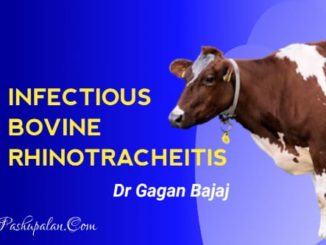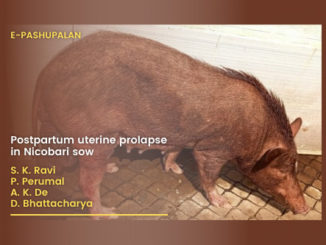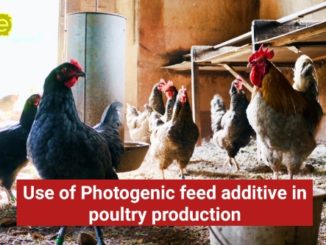Introduction
Brucellosis is an important bacterial disease with worldwide distribution and consistently ranked among the most economically important zoonosis globally. Particularly in low and middle-income countries it is more prevalent as the misconceptions about Brucella’s true incidence often arise from underreporting and insufficient monitoring data, a lack of financial resources and capacity. The burden that the disease place specifically on low-income countries has led the World Health Organization (WHO) to classify it as one of the world’s leading ‘neglected zoonotic disease. The disease is endemic in India, a country that house the world’s largest cattle and buffalo population and produce the most milk in the world. India had a cattle population at around 300 million, both buffalos and cows and contributes around 17% of the world’s total milk production. Thus the major setbacks owing to brucellosis have a serious economic loss on milk production. In many high-income countries, brucellosis has been successfully controlled or eliminated in livestock populations. In low-income countries, brucellosis is endemic and neglected, with large disease and livelihood burdens in animals and people and almost no effective control.
The organism was first discovered by Sir David Bruce in 1886 from the stained sections of spleen from an infected soldiers which was seen as small coccal organisms and named it Micrococcus melitensis. Later on it was renamed as Brucella melitensis in 1887 in honour of Sir David Bruce. The organism is a Gram negative coccobacillary organism of size 0.5 to 0.7 by 0.6 to 1.5 µm, nonencapsulated, nonmotile facultatively intracellular organism. The Brucella species are classified according to the preferred host B. abortus (cattle), B. melitensis (sheep and goats), B. suis (swine), B. canis (dogs), B. ovis (sheep) and B. neotomae (wood rats), B. ceti (dolphins, porpoises and whales) B. pinnipedialis (seals) and B. microti (vole and foxes) while B. inopinata was isolated from an infected human (Scholz et al 2008). B melitensis, B. abortus and B. suis are the most virulent species for domestic animals and humans.
Epidemiology
Brucella abortus has seven recognized biovars, the most reported of which are biovars 1, 2, 3, 4 and 9, with biovar 1 being the most prevalent in Latin America. A biovar is a variant prokaryotic strain that differs physiologically or biochemically from other strains in a particular species. The distribution of biovars helps in ascertaining the source of some infections. Bovine brucellosis has been reported in virtually all countries where cattle are farmed. It has been reported that the northern and central European countries, Australia, Canada, Japan and New Zealand are free from the disease. Buffaloes, camels, deer, goats and sheep are highly susceptible to infection. In animals, brucellosis is highly contagious and crossspecies transmission of certain Brucella spp. can occur. Mucosal contact with aborted fetuses and fetal membranes, which contain large amounts of the bacteria is an important means of transmission in livestock. Infected livestock exhibit clinical signs of great economic significance to stakeholders (i.e., small scale livestock farmers, meat and milk industry, human communities, etc.), including reduced fertility, abortion, and a substantial decline in milk production over an animal’s lifespan.
Pathogenesis
The main route of entry for Brucella is through the ingestion of food or water defiled with secretions or aborted fetal remains from infected cows. The infected cows usually abort during the fifth and ninth month of pregnancy. The affected females heavily shed the bacteria through the placenta, fetal fluids and vaginal exudates in case abortion does not occur. Milk is also an important source of transmission to the new born calves. Aborted fetuses, fetal membranes and fluids contain high bacterial loads are source of environmental contamination, and pose a major risk of infection of susceptible hosts.
Virulent Brucella organisms have the ability to infect both nonphagocytic and phagocytic cells. Due to its intracellular nature they are not fully exposed to innate and adaptive immune response (Martirosyan et al 2013) and remains sequestered from the effects of antibiotics which ultimately leads to three distinct phases- incubation phase where clinical symptoms are evident, the acute phase when the pathogen invades and disseminates in host tissue, and the chronic phase that can results in severe organ damage and death of the host organism. Due to persistence of the organisms in the host the chronic infection results whereby the brucellae are disperse by the lymphoreticular system and cause disease in the cardiovascular, hepatic, lymphoreticular, neurologic, and osteoarticular. Increased lymphohistiocytic cells in the spleen leads to measurable splenomegaly. Brucella reside in a special vacuole (Brucella-containing vacuole, BCV), inside mononuclear phagocytic cells, and modify intracellular trafficking, and transform the vacuole into a replicative compartment or brucellosome. Colonization of the trophoblastic cells of the placenta is associated with abortion in pregnant cows. Erythritol, a four-carbon polyol, plays an important role in the tropism of Brucella for the pregnant uterus of ruminants. The high concentrations of erythritol in uterine tissues, and the ability of B. abortus to utilise this rare sugar, suggest a determining factor for the tissue tropism of this pathogen in cattle.
Clinical signs
The most important clinical sign of brucellosis in cattle is abortion, which is seen in second half of pregnancy. Besides this, stillborn or weak calves, retained placentas, decreased milk yield decreased fertility, orchitis, epididymitis, and infertility are noticeable. After their first exposure to B. abortus abortion takes place but the following parturitions usually come to term, although an estimated 10 to 25 percent of infected cows will abort a second time. Nonpregnant females and bulls are usually asymptomatic. Those infected animals that are suspected of having asymptomatic infection may abort or give birth to infected calves and plays an important role in maintaining disease in a herd. Young calves that acquire the infection from dam or by ingesting contaminated milk may remain serologically negative and show no sign of the disease. Infected bulls may develop systemic signs of infection, including fever, anorexia, and depression. The outcome of infection in cattle relies on age, reproductive and immunological status, natural resistance, route of infection, infectious challenge, and virulence of the infective strain.
Effect of Brucellosis in animals
Brucellosis in livestock causes abortion, reduced milk production, lost draught power, reduced weight gain from chronic infections and ill-thrift, premature death or culling of unproductive stock, veterinary costs associated with treating clinically ill animals and diminished animal welfare. Brucella spp. causes a significant reduction in herd productivity that compromises food security and the livelihood of farmers who depend on the sale or trade of surplus meat, dairy, and offspring from their animals. Carpal hygromas are one of the chronic signs seen in cattle infected with brucellosis. This result in joint pain, inflammation and a reduction in mobility that severely limit their usefulness as a means of transportation or draught power and can compromise the income of farmers or community members who depend on them for these purposes. In cattle, infertility due to brucellosis is caused by post-abortion metritis and retained placentas. Additional invisible losses are associated with the transmission of Brucella spp. from infected livestock to wildlife or feral animals that can then transmit the disease to surrounding herds.
Though the economic losses owing to the disease cannot be underestimated brucellosis also causes indirect financial expenditures for disease management and forgone revenue when a disease is endemic such as the costs for veterinary services, vaccination, diagnostics, farmer indemnification, and a system for animal identification and maintenance of surveillance records. Forgone revenue related to brucellosis includes trade restrictions from areas endemic with B. melitensis, B. abortus, and B. suis.
Diagnosis
Confirmatory diagnosis of Brucella infections can be made only by the isolation and identification of Brucella, but in situations where bacteriological examination is not practicable, diagnosis must be based on serological methods. The serological tests include Rose Bengal Plate Test (RBPT), Complement Fixation Test (CFT), Serum Agglutination Test (SAT), Milk Ring Test (MRT), Enzyme Linked Immunosorbent Assay (ELISA) and Skin-Delayed-Type-Hypersensitivity (SDTH) test. The most valuable samples include aborted fetuses (stomach contents, spleen and lung), fetal membranes, vaginal secretions (swabs), milk, semen and arthritis or hygroma fluids. From animal carcasses, the preferred tissues for culture are those of the reticulo-endothelial system (i.e. head, mammary and genital lymph nodes and spleen), the late pregnant or early post parturient uterus, and the udder. Identification of Brucella organisms can be carried out by a combination of the following tests: organism morphology after Gram or Stamp’s staining, colonial morphology, growth characteristics, urease, oxidase and catalase tests, and the slide agglutination test with an anti-Brucella polyclonal serum. The PCR, including the real-time format, provides an additional means of detection and identification of Brucella species.
Vaccination
The aim of vaccination is the reduction of susceptibly individuals in the population and the success of any vaccination program depends mainly on the effectiveness of the vaccine used and its coverage in the target population. B. abortus S19 vaccine is the most widely used vaccine for the prevention of brucellosis in cattle, and most importantly remains the cited vaccine based on which other vaccines are compared. It is a live attenuated vaccine and the first B. abortus vaccine to be used extensively for bovine brucellosis control. The vaccine has been effective for the control of brucellosis in adult bovines and prevents abortion as well as decreasing the prevalence in herds. However due to the smooth nature of the strain S19 and the strong antibody response against the O-side chain, it does not permit discrimination of infected from vaccinated animals.
The live vaccine B. abortus RB51 is a spontaneous rough mutant obtained by subculturing the virulent strain B.abortus 2308 on medium containing rifampicin and penicillin. Rough strain RB51 is less virulent and it does not induce a positive response in typical serological diagnostic test. Vaccination of pregnant cows with strain RB51 can induce low levels of abortion (less than0.2%); however it is safe at lower doses during pregnancy.
Brucella abortus strain 45/20 is a rough strain isolated following twenty passages in guinea pigs. This strain is used only as heat-killed vaccine to avoid reversion to a virulent strain. Subunit vaccines, like recombinant proteins, are promising vaccine candidates because they are less biohazardous, well defined, avirulent, noninfectious and nonviable.
Global Public Health Concerns
It is a public health problem with adverse health implications both for animals and human beings as well as economic implications for individuals and communities. It is an occupational hazard with those particularly at risk such as laboratory workers, veterinarians, abattoir workers, farmers and animal keepers either living in close proximity with animals or handling aborted fetus and animal products that contaminated by Brucella agents. Symptoms in humans include intermittent or irregular fever, headache, weakness, profuse sweating, chills, weight loss and general aching. Infections of organs including the liver and spleen may also occur. It can be easily acquired through laboratory infections, and strict safety precautions should be observed when handling cultures and heavily infected samples, such as products of abortion. Expansion of animal industries, the lack of hygienic measures in animal husbandry and poor food handling partly account for brucellosis to remain a public health hazard. International travel and the importation of different dairy products into Brucella free regions also predispose the chance of Brucella infections. Consumption of unpasteurized milk and milk products further helps in the transmission of this infection from animals to humans. The best way to control this ubiquitous infection is through the one Health approach which involves human health, animal health, and environmental health. The dissemination of educational information about disease prevention to regions where Brucella is endemic is therefore essential for controlling the disease.
Treatment and control
In most cases, antibiotics in combination are found to be more effective against the infection; The treatment recommended by the World Health Organization for acute brucellosis in adults is rifampicin (600 to 900mg) and doxycycline (100mg) twice daily for a minimum of six weeks The common approaches used to control brucellosis include, quarantine of imported stock, hygienic disposal of aborted fetuses, fetal membrane and discharges with subsequent disinfection of contaminated area. Animals which are in advanced pregnancy should be kept in isolation until parturition. Moreover replacement stock should be purchased from herd free of brucellosis, and decide for or against immunization of negative animals. Pasteurization of dairy products is an important safety measure where this disease is endemic. Good hygiene and protective clothing/equipment are very important in preventing occupational exposure. Precautions should be taken to avoid contamination of the skin, as well as inhalation or accidental ingestion of organisms when assisting at a birth, performing a necropsy, or butchering an animal for consumption.
Conclusions
Brucellosis causes devastating losses to the livestock industry incurring heavy economic losses. It also has a serious impact on human healthcare systems and limits the economic potential of individuals, communities, and nations. Allocating resources towards the research and development of improved Brucella vaccines and diagnostic tools will help in addressing the problem. Vaccination is an effective strategy to prevent the spread of brucellosis and is in practice worldwide. The importance of vaccination should be taught to the animal owners. Proper education of field farmers, field workers, and the local community in endemic regions is required to bring awareness of the disease and for its prevention and control. Sterilization of labwares in a regular manner and laboratory tools would also result in a decrease in infection of clinical laboratory personnel. Modern updated knowledge on brucellosis should be delivered to farmers, veterinary professionals, and health educators, especially for rural populations, which will help to curtail the spread of Brucella infection. Adequate and timely diagnosis of brucellosis is necessary to control and treat the disease in the best way.
|
The content of the articles are accurate and true to the best of the author’s knowledge. It is not meant to substitute for diagnosis, prognosis, treatment, prescription, or formal and individualized advice from a veterinary medical professional. Animals exhibiting signs and symptoms of distress should be seen by a veterinarian immediately. |






Informative and resourceful article.